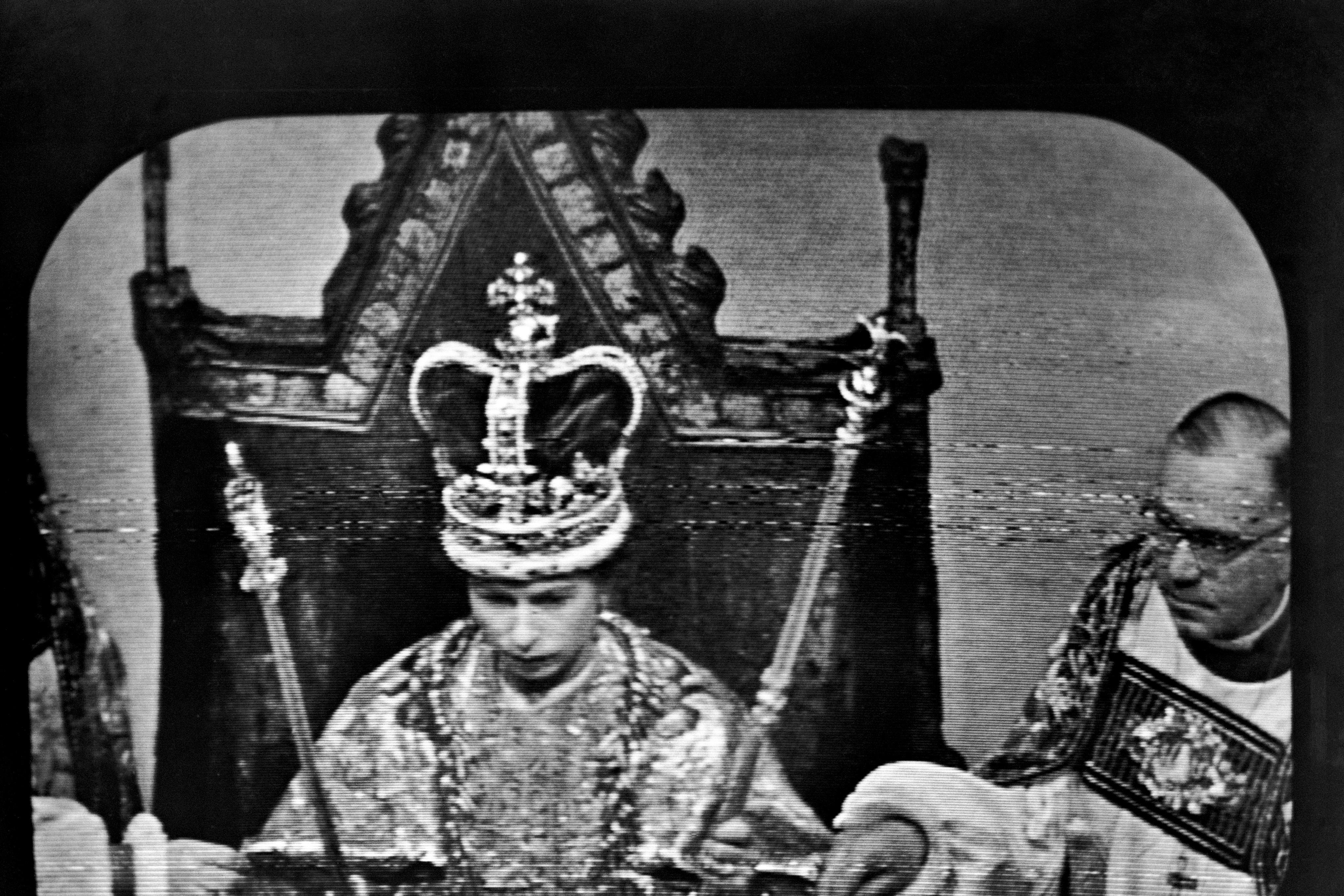How many people saw the Queen’s coronation on TV in 1953?
More than half of all adults in Britain are likely to have seen some of the coverage.

Your support helps us to tell the story
From reproductive rights to climate change to Big Tech, The Independent is on the ground when the story is developing. Whether it's investigating the financials of Elon Musk's pro-Trump PAC or producing our latest documentary, 'The A Word', which shines a light on the American women fighting for reproductive rights, we know how important it is to parse out the facts from the messaging.
At such a critical moment in US history, we need reporters on the ground. Your donation allows us to keep sending journalists to speak to both sides of the story.
The Independent is trusted by Americans across the entire political spectrum. And unlike many other quality news outlets, we choose not to lock Americans out of our reporting and analysis with paywalls. We believe quality journalism should be available to everyone, paid for by those who can afford it.
Your support makes all the difference.Millions of people are thought to have watched the Queen’s coronation on television in June 1953 – but there are no reliable figures, making comparisons with TV ratings of today difficult.
Television was still in its infancy in the UK in the early 1950s and the same was true of the methods used to measure its audience.
Unlike today, there was no independent organisation responsible for compiling and publishing ratings, and no consistent way in which the data was collected.
Instead, the BBC carried out its own surveys to discover what people had seen or heard on the television and radio.
The BBC was the only broadcaster in the UK at this time and its television service had not been running very long, having launched in 1936, closed during the Second World War, then restarted in 1946.
A daily survey of radio audiences had begun in 1939 but was only extended to cover television in 1952, the year before the Queen’s coronation.
The surveys were not carried out in a particularly robust way: BBC staff interviewed a varying cross-section of people across the country, asked them to remember what they had watched recently, then used the responses to estimate a figure for the overall number of viewers.
Based on surveys carried out after the coronation of Elizabeth II, the BBC estimated that its television coverage of the event was seen by more than 20 million adults in Britain.
It is not clear from the source (the BBC official handbook for 1955) whether this figure includes every adult who said they watched some television at any point during the entire coverage – which ran from 10.15am to 5.20pm – or if it refers only to the two-and-a-half-hour coronation service.
But 20 million is still a remarkable number when considering the number of households with a TV licence on March 31 1953 – nine weeks before the coronation took place – stood at just 2.1 million.
With so few licences, and such a huge estimated TV audience, many people are likely to have watched the coronation at someone else’s house, getting together with neighbours, friends and family.
The adult population of Britain in mid-1953 is estimated to have been around 35 million, according to the Office for National Statistics (based on people aged 20 and over).
This suggests that more than half of all adults in Britain saw some or all of the coronation on television.
Such a statistic becomes even more impressive when bearing in mind that not all of the country could even receive television in 1953.
The building of four high-power transmitters outside London – in the Midlands, the North of England, Scotland and Wales – had only been completed in 1952.
Two low-power temporary transmitters were in the process of being built during 1953 in north-east England and Northern Ireland to boost coverage, but even by 1954 only 84% of the UK population was within range of a TV signal.
The Queen’s coronation was the first time a television audience outnumbered a radio audience and it played a decisive role in boosting the popularity of the medium, as well as demand for TV sets.
By March 31 1954, almost a year on from the coronation, the number of TV licences had risen from 2.1 million to 3.2 million – the biggest annual jump since licences were first issued after the war.
By the end of the decade – a period that saw cheaper TV sets, rising standards of living and the launch in 1955 of ITV – the number stood at 9.3 million.
Estimates of TV audiences in the 1950s cannot be compared directly with TV ratings as they are measured today.
The current method of calculating TV audiences was established only in 1981 by the audience research organisation Barb.
Since 1981, the highest TV audience on record was for the funeral service for Diana, Princess of Wales, in September 1997, which was seen by 31.0 million on the BBC and ITV.
The funeral service of the Queen in September 2022 was seen by 26.5 million people across more than 50 TV channels.